How to Make an Herb Spiral Garden & Why You Should Do It!
Author: Jen Worst | Editor: Omar Alonso
Review & Research: Jen Worst & Chris Miller
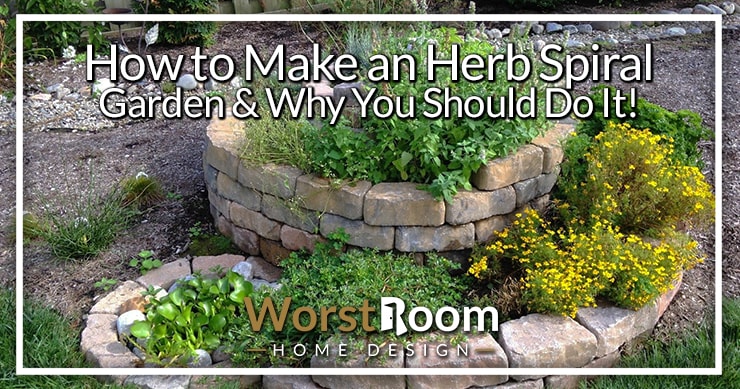
An herb spiral is created in an area where you want to plant a ton of herb plants, but you don't have a lot of space. The spiral herb garden technique is used to make the most efficient use of what little space is available.
If you're familiar with permaculture, the herb spiral is a part of it. In a small space, you can plant several varieties of herbs with different light and moisture requirements all together. The herb spiral design also makes your garden look lovely. They double and triple the amount of harvest you'd normally get out of a similarly sized space.
These little masterpieces were invented by Bill Mollison, who is called the co-founder of permaculture. The appeal is the micro-climates these can create where they all feed off of each other and invite the right insects and other aspects of nature that help them all thrive.
The point of spiral herb garden works on the idea of gravity. Water is poured from the top, which flows down freely. The top portion is a dry zone, and the bottom ones are for the plants that need water to thrive.
Things You Need to Build an Herb Spiral
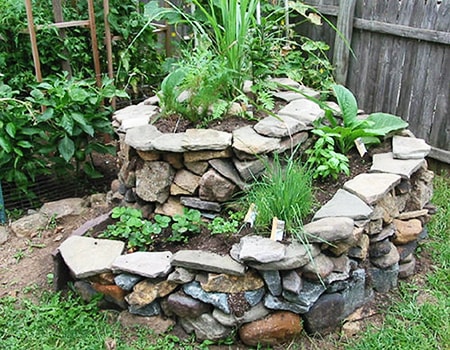
Before we start learning how to make an herb spiral, we should know what materials we may need.
You'll want something to place in the bottom to keep the soil from coming out, but it also needs to be able to drain water. You can use a weed mat and gravel, for instance. Avoid using carpet as the chemicals from it may seep into the soil when broken down.
A power drill (or any types of drills, really) will be needed to help with this drainage and for creating pilot holes for screws on the wood you'll be using to build out the frame, if you choose to use wood. Otherwise use concrete pavers or bricks.
You will need a bag of compost and fertilizer. Make sure it's organic. You can create it at home by yourself, and don't worry about any maggots in your compost. Homemade compost has live micro-organisms, which aids in growing your herbs.
Find some mulch and know that anything available will work. This is mainly for the bulk of the soil in which you'll mix in the compost and fertilizer. Just watch out for the fertilizer numbers in accordance to the guidance offered below.
Of course you'll need herb seeds as well of whatever variety you intend to grow. I recommend using tons of different types so you can gain experience and have access to more flavors. Plus you'll have more colors in your spiral garden.
It helps to have some kind of stick or wooden stake, a string, and some chalk or spray paint in order to lay out the initial circular pattern as seen in step one below.
Where to Build an Herb Spiral
The orientation is crucial, because the position of the sun should be in accordance with your plants' needs. If you can't rotate and move your frame around, then plant the seeds according to the position of the sun.
Think about which side may be facing your house and receive more shade, and where any trees might be that will cast more of a shadow earlier or later in the day, etc.
How to Build an Herb Spiral
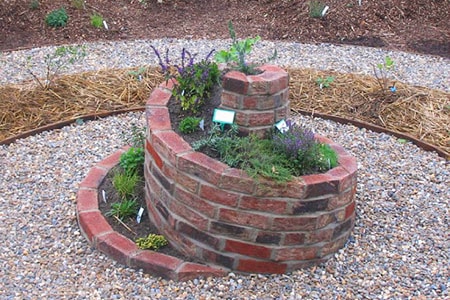
Now let's get started with the actual construction of the spiral. It's not difficult but I do recommend reading through all of the steps first before you start, then go through each step one at a time again while following the directions.
Step 1: Draw the Circle on the Ground
The first step is to measure accurately. Take a long stake and stick it in the ground where you want the middle of your herb spiral to be.
Now tie a string to the stake and stretch out its other end to a length that matches the radius you desire. Attach the loose end of the string to another stick or any means in which you can drag it around in a circle to mark the ground.
Now make a circle with it; this will help you build out the walls in place accurately. You can also use chalk if the surface you are building on is hard like on concrete.
Make two or three concentric circles (depending on how many times around the spiral you want to go) with a distance of a foot or so in between them. You can adjust all these lengths to your taste.
Step 2: Place a Barrier on the Ground
Building your herb spiral in your lawn means dealing with weeds. To stop weeds from growing up from the bottom and damaging your plants, you can soak cardboard totally wet so that they don't move from their place when you lay them on top of the marked circle we made in the previous step.
When the cardboard is broken down, it adds up to the organic matter and promotes micro-organisms' growth. It also kills anything trying to live beneath it. This works better than liner you'd put below mulch because you still need water drainage ultimately.
Step 3: Build the Herb Spiral Diagram
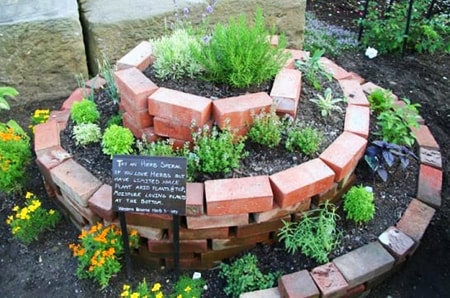
With your choice of edging material, build up a spiral inward of about a foot wide. Now, after making your outline of the marked circle, you can put a second tier of the chosen material.
The walls that are on the perimeter of the circle are supposed to be lower than in the next innermost wall. As it spirals inward it grows taller.
What you use to construct the walls is up to you. I'd recommend some kind of pavers, bricks, or other smaller items that stack well and are short enough to be able to curve around the diameter of the spiral.
Your spiral will taper down from the middle in the form of a slope. At the base of it, you can add a pond of water if you want or any other decorative ideas. Usually, the middle point is the highest at about 3 to 4 feet in height.
Step 4: Add Your Compost & Fertilizer
Now that your herb spiral design is completed, almost, it's time to work on the soil and organic matter. It's one of the essential parts of this entire procedure.
How and what you use in your soil composition depends upon the availability of specific stuff in your region and how much you plan on spending. There's no need to spend a bunch of cash. A normal bag of fertilizer will do the trick.
Ideally, if you want to save some money, you can put cheaper mulch in the whole spiral and add in compost pockets where you want to plant your herbs.
It's suggested to plant herbs that require more moisture to the lower parts, and for moisture-retaining, you can also use coconut fiber. Permaculture News provides a nice list of herbs for your herb spiral to consider.
You can use other organic matters to make your soil more fertile, for example, worm castings, mushroom compost, homemade compost, rotten manure, perlite, and vermiculite, etc.
We recommend keeping the pH of the herb spiral in check. If the pH is unbalanced or too high, you can maintain it using dolomite lime; it is used to sweeten the soil.
Step 5: Plant Your Herbs, Flowers, & Succulents
You're now ready to plant your herbs. I also recommend planting flowers around the other areas and even succulents. We've talked about how to propagate succulents, so just a few that you purchase can go far over time.
Why Should I Build Herb Spiral?
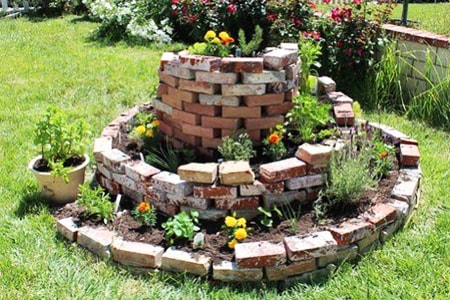
The real benefit of the herb spiral is for urban gardeners. But if you want to know how to build an herb spiral for yourself, then here are some reasons you should do that.
Make the Most Out of Small Places
An herb spiral is an excellent option for small spaces and gardens. The surface area increases for planting to optimize the use of the area. Additional growth is done vertically. Usually, people make their spiral gardens around 3 feet in diameter and then add more height if needed.
You Can Grow Different Herbs
In the herb spiral design, you can grow different varieties of herbs that require different environments. For example, sage, thyme, and rosemary need full sun exposure.
You can place them on top in the spiral. Towards the bottom, you can plant those herbs that require less sun exposure and more moisture, such as mint varieties, etc.
In this way, you can provide microclimates to different herbs in the same place, keeping everyone happy including yourself when it comes time to enjoy the fruits of your labor.
Healthy Produce
By building the spiral herb garden, you're going to fulfill the needs of each plant. When their needs are fulfilled they will thrive and give you the highest quality produce.
You can position each plant according to its requirements. For example, if you wanted to plant a tree with big leaves, you could plant it above a bush that requires protection from the sun.
In this way, both your plants will survive and thrive in a better environment. It works the same way in an herb spiral diagram when you lay it out before building.
Makes Your Garden More Beautiful
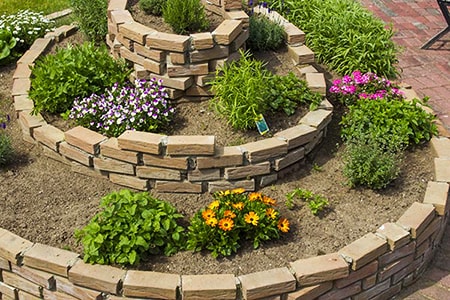
Everyone has the average plant containers and plant beds, but not every garden has an amazing spiral. Since the herb spiral is so different than the usual gardening stuff, all the visitors will focus on it.
An amazingly built spiral becomes the center of attention in a garden. The added height makes it stand out more, too, which can draw attention away from areas of your garden that still need work.
Make Use of Your Concrete Surface
Herb spiral can be made, survive, and thrive even on the concrete surfaces available. There's no need for excessive digging or anything else. Most of us have patios or decks where we're not sure how to use the space. This is a great addition to bring some color and life to an otherwise dull area.
Herb Spirals are Easy to Work With
These are extremely easy to work with, and you can harvest and maintain your beloved herbs without much trouble. If your back hurts from bending too much, then this herb spiral design is for you.
You can use the top of your spiral for the herbs you need daily. It's also easy to water all your plants. It's completely low maintenance once you've built it.
Saves You Money
By building an herb spiral in your garden, you'll save the money you spend on fresh herbs. Whenever you need any herb, you can just go to your garden and collect it from there. It saves time on preparation and runs to the store too.
Maintenance is Easier
Not many people have the time and energy to maintain a big garden at their place. However, a spiral is easier to maintain, and by setting irrigation, you will be free from watering your herbs daily. All you have to do is mulch, sow, and harvest.
Pest Control is Built-in
A good herb spiral depends upon the position of each herb. If you place herbs that consist of intense fragrance, you will get yourself built-in pest control. Most pests and insects do not come closer to plants that have a strong scent. We've talked about this before in posts like 21 Plants that Repel Ticks.
Mutual Benefits
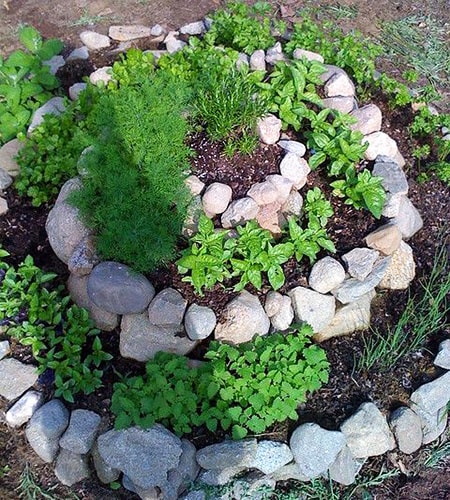
The benefits from building one of these are mutual; a nicely built spiral will benefit your whole garden. If you have flowering herbs, they will attract bees and butterflies, which are essential pollinating agents. In this way, your full garden remains in good shape and maximum produce.
Low-Cost Building
The building of an herb spiral can be done at very low costs. You can use materials lying around in your house and have fun being creative with your spiral. If you want to make it a bit nicer, the small amount of lumber you'll need will be a negligible cost.
Create Your Bio-Diverse Habitat
If your garden has a pond at its bottom, building a herb spiral close to it will attract all types of wildlife. For example, frogs and lizards are essential living beings around your garden as they are going to eliminate mosquitoes and eat up pests and insects.
It'll save your garden from pests and unwanted insects. Some of these herbs are plants that repel mosquitos too.
That's How to Make an Herb Spiral
In conclusion, an herb spiral garden close to your kitchen will benefit you in so many ways. Just walk out onto your back patio or into your yard and gather the herbs you need.
You w'll forget about eating bland food with just salt and pepper once you taste your homegrown basil, parsley, rosemary, and thyme. Sage is my favorite, so I definitely recommend you growing that in your herb spiral.



